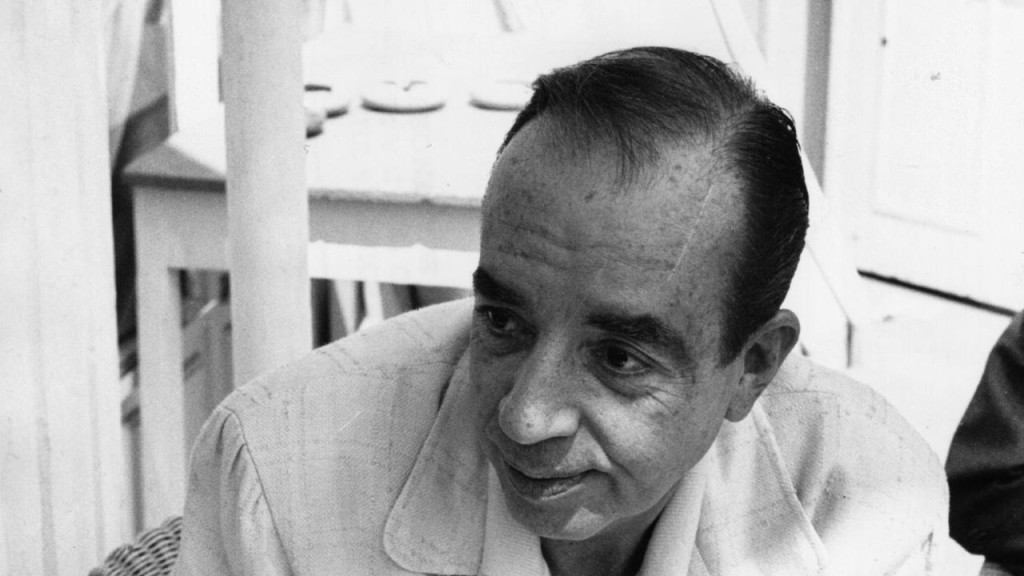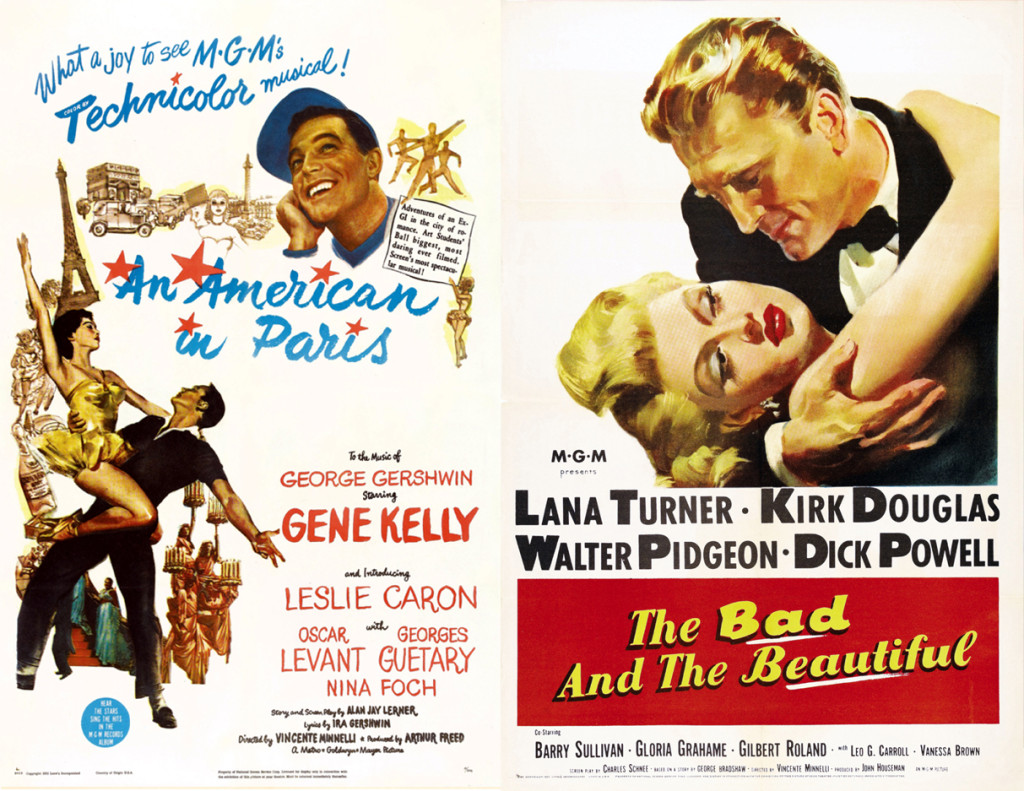Want to be knowledgeable about our filmmaker of the month without committing yourself to an entire filmography? Then you need the Hell Is For Hyphenates Cheat Sheet: a suggested double that will make you an insta-expert in the director we're about to discuss…
AN AMERICAN IN PARIS (1951) and THE BAD AND THE BEAUTIFUL (1952)
Vincente Minnelli was one of the great filmmakers of Hollywood's Golden Age, and few could match him when it came to those glorious Technicolor (and sometimes Metrocolor, but that format is not as fondly remembered) musicals. One of the greatest of all time was An American In Paris, starring Gene Kelly and Leslie Caron (in her first ever role) in one of the most beautiful, creatively-ingenious musicals ever made. It's stunning, but also tremendously funny: watch Oscar Levant's face when he realises his two friends, sitting either side of him in a café, are both obliviously professing their love for the same woman. There aren't many directors other than Minnelli who could balance all these elements so perfectly, manipulating the audience into enjoying these scene on many different levels simultaneously. And that's probably why he was able to switch genres without missing a step, because the following year he came out with one of the best-regarded dramas of all time: The Bad and the Beautiful. He may be remembered primarily as a director of musicals, but Minnelli was equally adept at everything from thrillers to dramas to all-out comedies. With The Bad and the Beautiful, he told a ruthless tale of Hollywood's seedy side: a director, a writer and a movie star recall the ways in which producer Jonathan Shields managed to totally screw them over, as money and power blinds all it touches to the loyalty and friendship they'd once professed. Few films better show what a master of the craft Minnelli was: the betrayals are handled with gentility and humanity, almost forcing you sympathise with the amoral Shields, and on a technical level, Minnelli was untouchable: the car crash sequence in this film is, without a doubt, decades ahead of its time. Spend an evening in watching these films back-to-back, and you'll be well-versed as to why Vincente Minnelli was one of cinema's greats.
Substitutions: If you can't get An American In Paris, try the classic Judy Garland musical Meet Me In St Louis (1944). If you can't get The Bad and the Beautiful, try Minnelli’s other Kirk Douglas film about betrayal and movie making, Two Weeks In Another Town (1962).
The Hidden Gem 1: If you're keen to seek out one of Minnelli's slightly-lesser-known works, get yourself a copy of Some Came Running (1958). Frank Sinatra, Dean Martin and Shirley MacLaine star in a drama about a soldier returning to his home town for the first time in years, desperate to avoid those who want to question him about his promising-but-abandoned career as an author. It's a brilliant and dirty film, and despite Minnelli's previously fraught relationship with Cinemascope, he uses the format here to incredible, memorable effect.
The Hidden Gem 2: So, we're doing two Hidden Gems, partly because Minnelli made so many great films, partly because we couldn't decide whether to include a drama or a musical, and partly because we make the damn rules. So if you're not adverse to musicals, you need to seek out Judy Holliday and Dean Martin in Bells Are Ringing (1960). Written by the brilliant Betty Comden & Adolph Green (Singin' in the Rain), it's baffling how this has slipped from the collective memory. Maybe it's because the songs - though very catchy and fun - are not really all-time classics. But it doesn't matter. This is arguably the funniest film in Minnelli's canon, with Judy Holliday giving the sort of hilarious performance you'd expect to see today, possibly as the star of her own network sitcom. If you want to irritate your friends with endless proclamations about why Judy Holliday was one of cinema's all-time great comics, you need to see this film.
The next episode of Hell Is For Hyphenates, featuring Jess Lomas talking Vincente MInnelli, will be released on the morning of January 31 (AEST).


